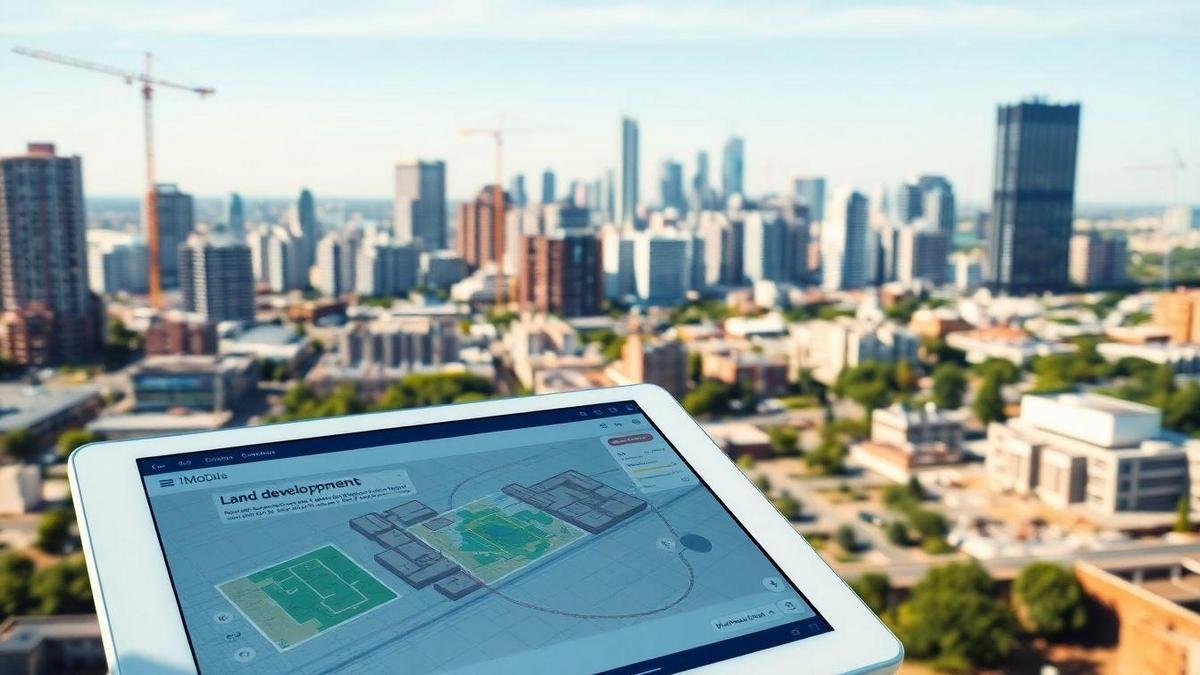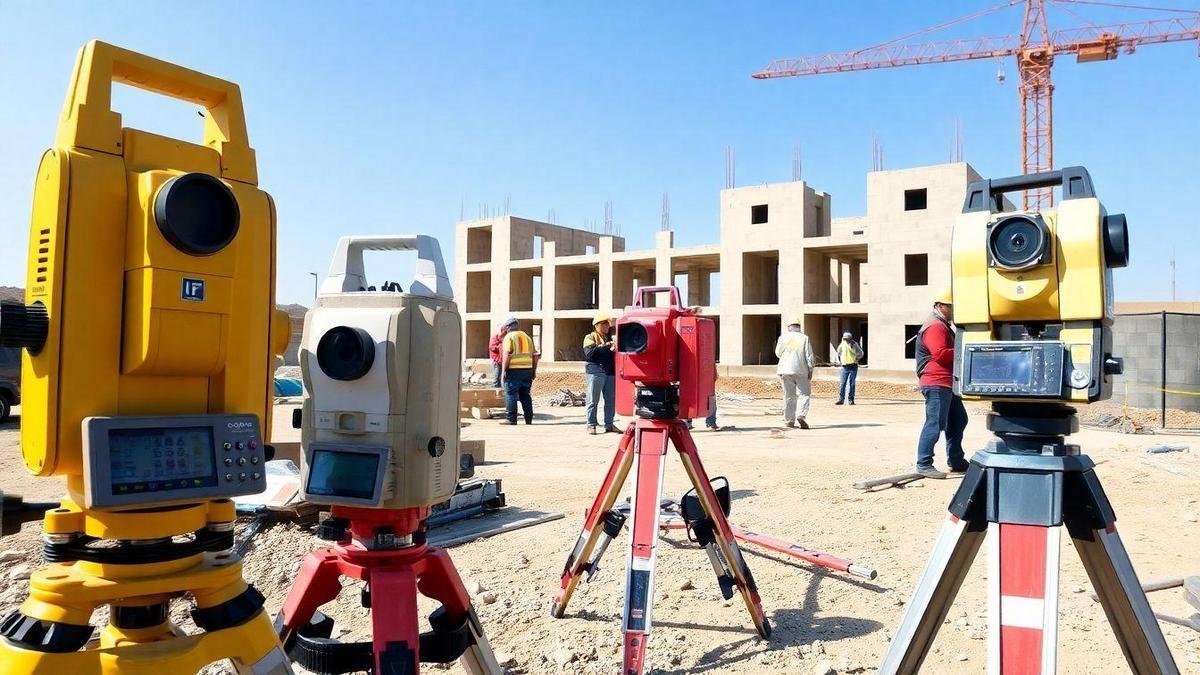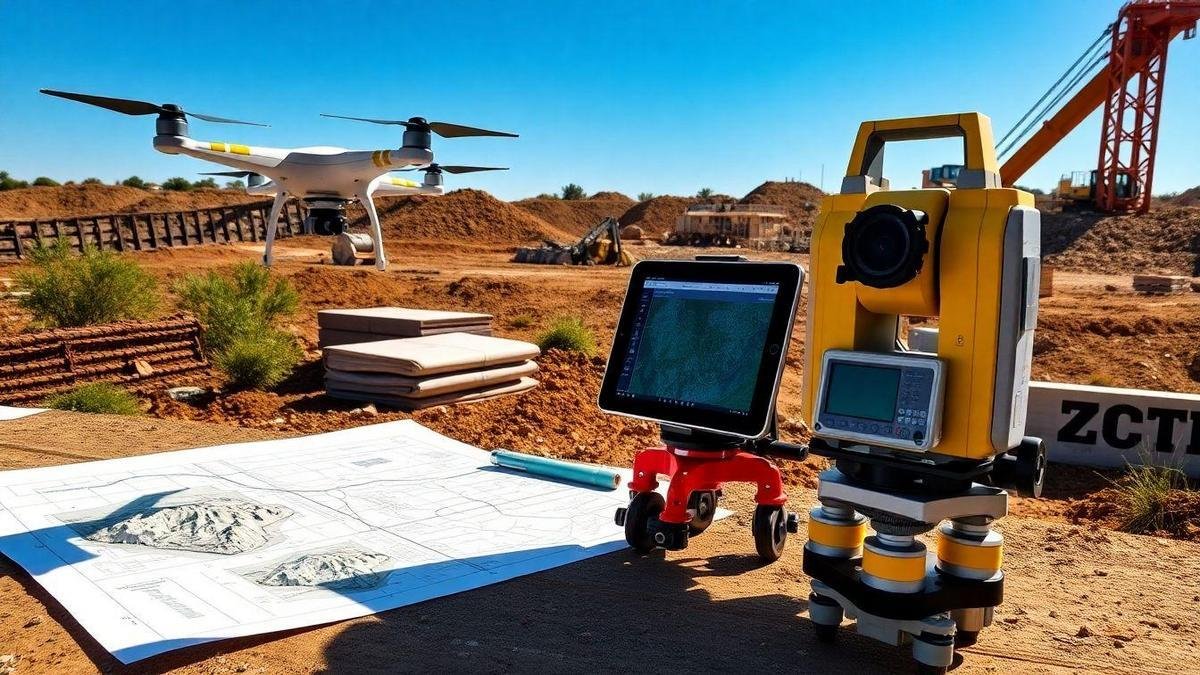The best tools for land developers in the US are essential for success in today’s competitive market. This article explores how these tools enhance efficiency, reduce costs, and streamline processes. From advanced software options to cutting-edge surveying equipment, every technology plays a vital role. Readers will discover the key features to look for, the types of tools available, and the benefits of using GIS technology. It also highlights effective urban development and zoning analysis tools that lead to successful projects. Understanding these instruments can transform how developers plan, execute, and analyze their land use initiatives.
- Developers can streamline projects with advanced software.
- New tools for developers help visualize land layouts easily.
- Collaboration features improve team communication.
- Data analysis tools support better decision-making.
- Mobile apps enable work on-the-go.

Importance of Land Development Tools for Investors
Enhancing Efficiency in Projects
In today’s fast-paced market, investors must be quick on their feet. The right land development tools can make all the difference. These tools help investors streamline their projects, allowing them to finish tasks faster and with greater precision. By using advanced technology, they can keep track of every step in the development process, resulting in fewer mistakes and a smoother workflow.
Reducing Costs with Technology
Cost savings are crucial for any investor. With the best tools for land developers in the US, investors can cut down on unnecessary expenses. Technology plays a vital role in this. For instance, software can automate many tasks that would otherwise require a lot of time and manpower, reducing labor costs and minimizing the chances of costly errors.
The Role of Software in Streamlining Processes
Software is a game changer in land development. Here’s how it helps:
| Software Features | Benefits |
|---|---|
| Project Management Tools | Keeps projects on track |
| Budget Tracking | Monitors expenses closely |
| Data Analysis | Provides insights for decisions |
| Communication Platforms | Enhances team collaboration |
With these features, investors can make informed decisions quickly, analyze data, and adjust their plans as needed, which is essential in a competitive market.

Key Features of the Best Tools for Land Developers in US
User-Friendly Interfaces
When selecting the best tools for land developers in the US, a user-friendly interface is crucial. These tools should be easy to navigate, allowing developers to quickly access the features they need without a steep learning curve. A clean layout, intuitive menus, and clear icons can make a world of difference. For instance, a platform that allows users to visualize land plots easily can streamline decision-making and enhance productivity.
Integration with Other Software
Another significant feature is the ability to integrate with other software. Land developers often use multiple tools for various tasks, such as project management, financial analysis, and GIS mapping. A tool that seamlessly connects with these systems can save time and prevent data silos. For example, if a land development tool can integrate with accounting software, it allows for real-time financial tracking, ensuring that developers stay on budget.
| Integration Features | Benefits |
|---|---|
| Compatibility with GIS | Enhanced mapping and analysis |
| Links to CRM Systems | Improved client relationship management |
| Financial Software Sync | Real-time budget tracking |
Importance of Customization Options
Customization options are another key aspect. Developers have unique needs based on their projects and goals. A tool that allows for tailored features can significantly boost efficiency. For instance, a developer may need specific reporting formats or data visualization styles. Having the ability to adjust these settings can make a tool much more effective for their specific situation.

Types of Land Development Software Available
Land Planning Tools
Land planning tools are essential for developers looking to create effective and efficient land use plans. These tools help in visualizing the land’s potential and making informed decisions. They allow users to assess zoning regulations, environmental impacts, and community needs. By providing a clear view of the land, these tools enable developers to make strategic choices.
Some popular land planning tools include:
- ArcGIS: This software helps in mapping and analyzing land data to plan developments effectively.
- AutoCAD Civil 3D: Known for its design capabilities, it assists in creating detailed land development plans.
- SketchUp: This user-friendly tool is perfect for creating 3D models of land projects.
Construction Project Management Tools
Construction project management tools are vital for overseeing the actual building process. They help in tracking progress, managing budgets, and coordinating teams. These tools streamline communication and ensure that everyone is on the same page.
Some noteworthy construction project management tools are:
- Procore: Offers a comprehensive platform for managing construction projects from start to finish.
- Buildertrend: This cloud-based software simplifies project management and client communication.
- CoConstruct: Tailored for custom builders, it helps with budgeting, scheduling, and client interactions.
Overview of Popular Software Options
To provide a clearer picture, the following table outlines some of the best tools for land developers in the US:
| Software | Type | Key Features |
|---|---|---|
| ArcGIS | Land Planning | Mapping, data analysis, zoning assessments |
| AutoCAD Civil 3D | Land Planning | Design capabilities, detailed plans |
| SketchUp | Land Planning | 3D modeling, user-friendly interface |
| Procore | Construction Management | Project tracking, budget management |
| Buildertrend | Construction Management | Client communication, scheduling |
| CoConstruct | Construction Management | Budgeting, custom project management |
These tools play a significant role in making land development projects smoother and more efficient. They allow developers to focus on what matters most—creating sustainable and profitable developments.

Benefits of GIS Technology for Land Developers
Mapping and Analyzing Land Use
GIS Technology, or Geographic Information Systems, plays a crucial role for land developers. It allows them to map and analyze land use effectively. By using GIS, developers can see how land is currently being used and make informed decisions about future projects.
For instance, they can identify areas that are underutilized or overdeveloped. This insight helps in planning new developments that meet community needs. Developers can visualize data on maps, making it easier to spot patterns and trends.
| Land Use Type | Description | GIS Benefits |
|---|---|---|
| Residential | Housing areas | Identify growth areas |
| Commercial | Business districts | Analyze customer demographics |
| Agricultural | Farmland | Monitor crop health |
| Industrial | Manufacturing zones | Assess environmental impact |
Improving Decision-Making Processes
GIS technology also plays a significant role in improving decision-making processes. Developers can use data to forecast potential challenges and opportunities, leading to better planning and resource allocation.
For example, if a developer wants to build a new shopping center, GIS can help assess traffic patterns, population density, and existing infrastructure. This data helps developers make choices that align with community needs and market demands.
Case Studies of Successful GIS Implementation
Several case studies highlight the successful use of GIS in land development.
- City of Denver: The city used GIS to streamline zoning regulations, leading to faster approvals for new developments and increased community engagement.
- Los Angeles County: Implemented GIS to track land use changes over time, allowing planners to adapt to shifting demands and optimize land use.
- Miami-Dade County: Utilized GIS for disaster planning, ensuring that new developments were resilient to hurricanes and flooding.
These examples show how GIS technology can lead to better outcomes for land developers and communities alike.

Surveying Equipment Essential for Developers
Types of Surveying Equipment
Surveying equipment is crucial for developers as it helps them gather precise information about land. Here are some key types of surveying equipment:
- Total Stations: These devices combine a theodolite with an electronic distance measuring tool, vital for measuring angles and distances accurately.
- GPS Systems: Global Positioning Systems provide real-time location data essential for determining exact positions on the earth’s surface.
- Levels: Optical and digital levels help in establishing a flat plane, used to measure height differences across the land.
- Theodolites: These instruments measure horizontal and vertical angles, crucial for laying out angles in construction projects.
- Drones: Increasingly popular, drones can capture aerial images and data, transforming how developers survey land.
How Technology Improves Accuracy
Technology plays a significant role in improving the accuracy of surveying. With advancements in equipment and software, developers can gather data with greater precision. For instance, GPS technology allows for real-time corrections, ensuring that measurements are spot on. Additionally, software tools can analyze data quickly, providing insights that would take much longer to achieve manually.
The Impact of Drones in Land Surveying
Drones have revolutionized land surveying. They can cover large areas quickly, capturing high-resolution images. This is especially useful for developers who need to assess vast tracts of land.
| Benefits of Drones | Details |
|---|---|
| Speed | Drones can survey large areas in a fraction of the time compared to traditional methods. |
| Cost-Effective | Reduces the need for extensive manpower and equipment. |
| High-Resolution Data | Provides detailed images and topographical maps. |
| Access to Difficult Areas | Drones can easily reach challenging locations that are hard to access. |
In summary, the integration of drones into land surveying is a game-changer. They provide developers with valuable data that enhances decision-making and project planning.

Environmental Assessment Software in Land Development
Importance of Environmental Impact Studies
Environmental impact studies play a crucial role in land development. These studies help identify how a project might affect the environment, highlighting potential issues like air and water quality, wildlife habitats, and community health. By conducting these assessments, developers can make informed decisions that protect natural resources and enhance community well-being.
For instance, a developer planning to build a new housing complex must consider how construction will impact local wildlife. An environmental impact study can reveal important information, allowing the developer to modify their plans to minimize harm. This proactive approach not only meets regulatory requirements but also fosters a positive relationship with the community.
Tools for Compliance with Regulations
Navigating environmental regulations can be tricky. Fortunately, there are several tools available to help land developers comply with local and federal laws. These tools streamline the assessment process, making it easier to gather necessary data and submit reports.
Some of the essential functions of these tools include:
- Data collection: Gathering information on environmental conditions.
- Reporting: Creating documents that meet regulatory standards.
- Analysis: Evaluating potential impacts and suggesting mitigation strategies.
By utilizing these tools, developers can stay on the right side of the law while promoting sustainable development practices.
Examples of Leading Environmental Assessment Tools
Here is a table showcasing some of the best tools for land developers in the US:
| Tool Name | Key Features | Use Case Example |
|---|---|---|
| EcoSmart | Data collection, impact analysis | Used for assessing residential projects |
| EnviroCheck | Compliance reporting, regulatory updates | Helps in commercial development projects |
| GreenPlan | Sustainable design suggestions, community engagement | Ideal for mixed-use developments |
These tools provide developers with the resources needed to conduct thorough environmental assessments. By leveraging such technology, they can address environmental concerns effectively and responsibly.

Urban Development Planning Tools for Modern Cities
Features of Effective Urban Planning Software
Effective urban planning software plays a crucial role in shaping modern cities. These tools are designed to help planners visualize and manage urban spaces efficiently. Key features include:
- User-Friendly Interface: Easy navigation allows planners to focus on their projects without getting lost in complicated menus.
- Data Integration: The ability to combine various data sources helps in making informed decisions.
- Real-Time Collaboration: Teams can work together from different locations, sharing updates instantly.
- 3D Visualization: Seeing a project in three dimensions can help stakeholders understand the design better.
- Scenario Planning: This feature allows users to explore different outcomes based on various planning scenarios.
The Role of Community Engagement
Community engagement is vital in urban development. It allows residents to express their needs and preferences, ensuring the plans reflect the community’s desires. Engaging the public can take many forms, such as:
- Public Meetings: These gatherings provide a platform for community members to voice their opinions.
- Surveys: Collecting feedback through surveys helps planners understand the community’s priorities.
- Workshops: Interactive sessions can foster creativity and collaboration among community members.
Involving the community not only builds trust but also leads to better outcomes. When residents feel heard, they are more likely to support development projects.
Successful Urban Development Projects Using These Tools
Several urban development projects have successfully utilized these planning tools. For instance, the revitalization of downtown areas in cities like Detroit and San Francisco demonstrates how effective planning can breathe new life into urban spaces. These projects relied on:
| Project Name | Location | Tools Used | Outcome |
|---|---|---|---|
| Detroit Revitalization | Detroit, MI | 3D Visualization, Community Surveys | Increased local business and tourism |
| San Francisco Bay Area | San Francisco, CA | Data Integration, Real-Time Collaboration | Improved transportation and housing access |
These examples highlight the importance of using the best tools for land developers in the US. They show how effective software and community engagement can lead to thriving urban environments.

Zoning Analysis Tools for Effective Land Use
Understanding Zoning Regulations
Zoning regulations play a crucial role in land development. They dictate how land can be used and what can be built on it. For investors, knowing these rules is essential. Zoning laws can vary greatly from one location to another, affecting everything from residential areas to commercial developments.
Understanding these regulations involves looking at several key aspects:
- Land Use Types: Different zones allow for different types of development, such as residential, commercial, or industrial.
- Building Heights: Regulations often limit how tall buildings can be.
- Setbacks: These rules determine how far structures must be from property lines.
By grasping these elements, investors can make informed decisions that align with local laws and community needs.
Tools for Visualizing Zoning Changes
Visual tools can make zoning regulations easier to understand. They help investors see how changes in zoning can impact land use. Some of the best tools for land developers in the US include:
- GIS Mapping Software: Geographic Information Systems (GIS) provide visual representations of zoning data. Investors can overlay zoning maps with other data like demographics and infrastructure.
- Zoning Apps: Mobile applications allow users to check zoning classifications on the go, often including features for analyzing potential changes.
- Online Zoning Portals: Many cities offer online resources where investors can view current zoning maps and proposed changes.
These tools not only simplify the complexities of zoning but also empower investors to make strategic choices.
The Future of Zoning Analysis in Development
As technology advances, the future of zoning analysis looks promising. New tools are emerging that can analyze zoning data in real-time, giving investors access to up-to-date information that can influence their decisions.
- AI and Machine Learning: These technologies can predict zoning trends and help investors identify potential opportunities.
- 3D Visualization: Future tools may allow for 3D models of proposed developments, giving a clearer picture of how a project would fit into its environment.
Investors who stay ahead of these trends will be better positioned to navigate the ever-changing landscape of land development.

Site Analysis Tools for Optimal Development Decisions
Key Factors in Site Selection
Selecting the right site for development is crucial for success. Several key factors play a significant role in this decision-making process:
- Location: The site’s proximity to essential services, transportation, and amenities can make or break a project.
- Zoning Regulations: Understanding local zoning laws is vital; these laws dictate what can be built and how land can be used.
- Environmental Impact: Evaluating the potential environmental effects of development helps in making responsible choices.
- Market Demand: Analyzing the demand for residential, commercial, or industrial spaces ensures that the project aligns with market needs.
- Infrastructure: Access to utilities like water, electricity, and internet is essential for any developmental project.
Tools for Evaluating Site Potential
Various tools assist in assessing a site’s potential for development. These tools provide valuable insights, helping investors make informed choices. Here are some of the best tools for land developers in the US:
| Tool Name | Purpose | Benefits |
|---|---|---|
| GIS Software | Geographic mapping | Visual representation of site features |
| Market Analysis Tools | Demand forecasting | Identifies trends and market needs |
| Environmental Assessment Tools | Impact studies | Evaluates environmental risks |
| Financial Modeling Software | Feasibility analysis | Assesses financial viability |
| Project Management Tools | Workflow organization | Enhances project efficiency |
How Data-Driven Decisions Enhance Development Success
Data-driven decisions are the backbone of successful land development. By leveraging data, investors can:
- Minimize Risks: Analyzing data helps identify potential pitfalls early in the process.
- Maximize Returns: Understanding market trends can lead to more profitable investments.
- Enhance Planning: Data allows for better project planning and execution, reducing delays and costs.
In today’s fast-paced market, relying on data is not just smart; it is essential for staying ahead of the competition.
In the End…
In the dynamic landscape of land development, embracing the right tools is akin to wielding a well-honed sword in battle. The best tools for land developers in the US serve as indispensable allies, enhancing efficiency, reducing costs, and streamlining processes. From advanced software to innovative surveying equipment, each instrument plays a pivotal role in shaping successful projects.
Understanding how to leverage these tools not only transforms the way developers plan and execute their initiatives but also empowers them to make informed decisions that resonate with community needs and market demands. As the industry evolves, staying ahead of technological advancements will be crucial for developers seeking to thrive in this competitive arena.
For those eager to delve deeper into the world of land development tools and strategies, more insightful articles await at Land Development Hub. Additionally, those interested in understanding zoning regulations and starting land development can find essential resources to guide their journey.
Eduardo Bugallo, PhD.

No responses yet